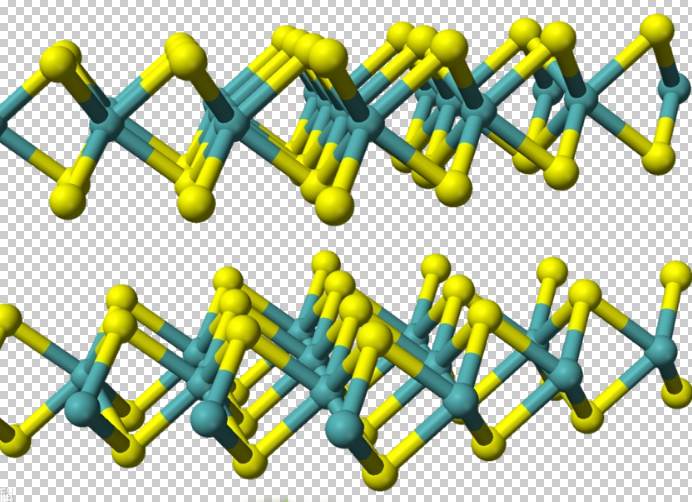Professional industry ceramic supplier, silicon nitride, silicon carbide, aluminum nitride and any other kinds of ceramics.
How to prepare tungsten disulfide
1. Roasting decomposition method:
Tungstic acid reacts with ammonia water under stirring at 57-60°C for 3 hours, and the natural sedimentation is maintained for more than 16 hours. The generated ammonium tungstate reacts with hydrogen sulfide gas to generate ammonium tetrathiotungstate, which is calcined at high temperature and decomposed into tungsten disulfide.
H2WO4+2NH3·H2O→(NH4)2WO4+2H2O
(NH4)2WO4+4H2S→(NH4)2WS4+4H2O
2(NH4)2WS4+3O2→2WS2+4NH3+2S+2SO2+H2O
2. Tungsten reacts very slowly with liquid sulfur. WS2 can be formed by passing sulfur vapor on red-hot tungsten. Tungsten is mixed with stoichiometric amount of sulfur, and reacted at 800℃ for 24h in nitrogen atmosphere to form WS2. For example, at 6MPa and 1800℃, it can form orthorhombic WS2.
3. Using ammonium tetrathiotungstate as raw material, under the condition of isolating air, heating and decomposing ammonium tetrathiotungstate, heating from room temperature to 700~1200℃ with a temperature gradient of 100~200℃/hour, And after 24~48 hours of heat preservation at this temperature, it is then lowered to room temperature with a temperature gradient of 30~110°C/hour, and the material is discharged and pulverized.
The preparation method of ultra-fine scaly crystal tungsten disulfide used for lubricant has simple process equipment, no environmental pollution, safe and reliable operation, and can produce stable quality, high-purity ultra-fine tungsten disulfide with hexagonal crystal structure.
Physical and chemical properties of tungsten disulfide
Tungsten disulfide is a compound of tungsten and sulfur, with chemical formula WS2 and molecular weight of 247.97. It is a black-gray powder. It appears as tungstenite in nature and is a dark gray orthorhombic crystalline solid. The relative density is 7.510.
Slightly soluble in cold water, soluble in hot water. Insoluble in hydrochloric acid and alkali (except for the mixture of concentrated nitric acid and hydrofluoric acid). Soluble in molten alkali, insoluble in alcohol. Density 7.6g·cm-3. It has reducibility and can react with hot concentrated sulfuric acid, nitric acid, aqua regia and other strong oxidants, and can be converted into WO3 when heated in air or oxygen. When heated to 1250℃ in vacuum, it decomposes into tungsten and sulfur. In a dry stream of pure nitrogen, the mixture of tungsten trisulfide and sulfur is co-heated to 900°C to sublime the excess sulfur, and the residue is tungsten disulfide.

Tungsten Disulfide Overview
Fluidized tungsten is a small gray crystal or powder with metallic luster, belonging to the hexagonal crystal system, with semiconductor and diamagnetic properties. The natural mineral is tungsten ore. The layered structure is easily dissociated and has lubricating properties similar to graphite.
Application of tungsten disulfide
Tungsten disulfide can be used as a lubricant, and its performance is better than that of molybdenum disulfide, with a lower coefficient of friction and higher compressive strength. Stand alone equipment for high temperature, high pressure, high speed, high load and operation in chemically active media. Lubricants formulated with other materials for forging and stamping can prolong die life and improve product finish. Filler material configured with PTFE and Nylon for the manufacture of self-lubricating parts. In addition, tungsten disulfide can also be used as a catalyst in the petrochemical industry, which has the advantage of cracking tungsten disulfide. (WS2) or tungsten disulfide is a very smooth dry film friction coating. WS2 is extremely low, at 0.03, lower than PTFE, graphite or molybdenum disulfide (MoS2). It has unmatched performance in lubricity, non-stick, low friction, wear life and size ratings compared to many other WS2s. It has a wide range of applications in transistors, sensors, photocatalysis, electronic equipment and other fields. Tungsten disulfide powder has good solubility in water and ethanol.
WS2 is an excellent release material for plastic molds, extrusion dies and other release applications.
WS2 can save hydraulic oil and can also be used with petrochemical oil, grease, synthetic oil, silicone oil valve and hydraulic oil. It has affinity for the liquid layer and keeps the liquid layer. surface, thereby further improving the lubrication effect. Small parts can be coated without tolerance issues when the thickness is less than 1 micron.
WS2 is also a fairly inert and non-toxic material that has been used in medical devices and food processing applications.
WS2 replaces customer substrates with high-speed processing at ambient temperatures. It will not make the substrate continuous or warp.
WS2 can be used alone or in combination with our PVD hardcoats for increased durability, high performance, stable and reliable catalytic activity, and long service life.
Tungsten disulfide powder price
The price of tungsten disulfide powder will vary randomly with factors such as tungsten disulfide production cost, transportation cost, international situation, exchange rate and tungsten disulfide market supply and demand. Tanki New Materials Co., Ltd. aims to help industries and chemical wholesalers find high-quality, low-cost nanomaterials and chemicals by providing a full range of customized services. If you are looking for tungsten disulfide, please feel free to send an inquiry to get the latest price of tungsten disulfide.
Tungsten disulfide suppliers
As a global tungsten disulfide supplier, Tanki New Materials Co., Ltd. has extensive experience in the performance, application and cost-effective manufacturing of advanced and engineered materials. The company has successfully developed a series of powder materials (zinc sulfide, zinc sulfide, bismuth sulfide, etc.), high-purity targets, functional ceramics and structural devices, and provides OEM services.
Tungsten Disulfide details:
Tungsten Disulfide particle size:FSSS=0.4 to 0.7 μm,FSSS=0.85 to 1.15μm. 80nm
Tungsten Disulfide purity:99.9%
| W | S | Al | As | Cl | Cu | Fe | Ni | P | Si | O |
| 74.12 | 25.82 | 0.001 | 0.002 | 0.03 | 0.002 | 0.005 | 0.002 | 0.002 | 0.003 | 0.002 |
